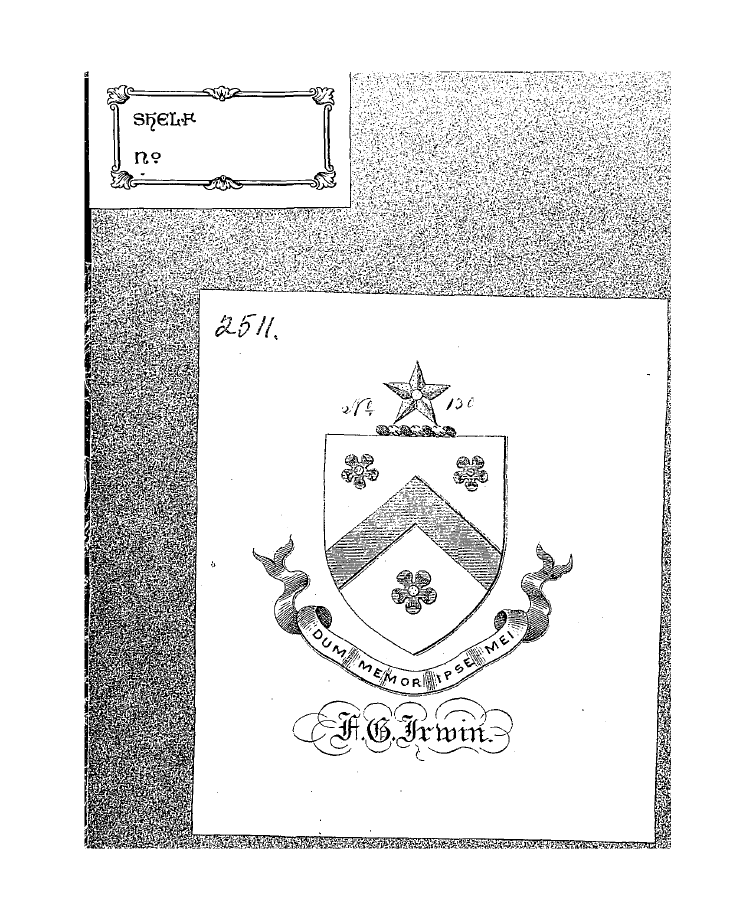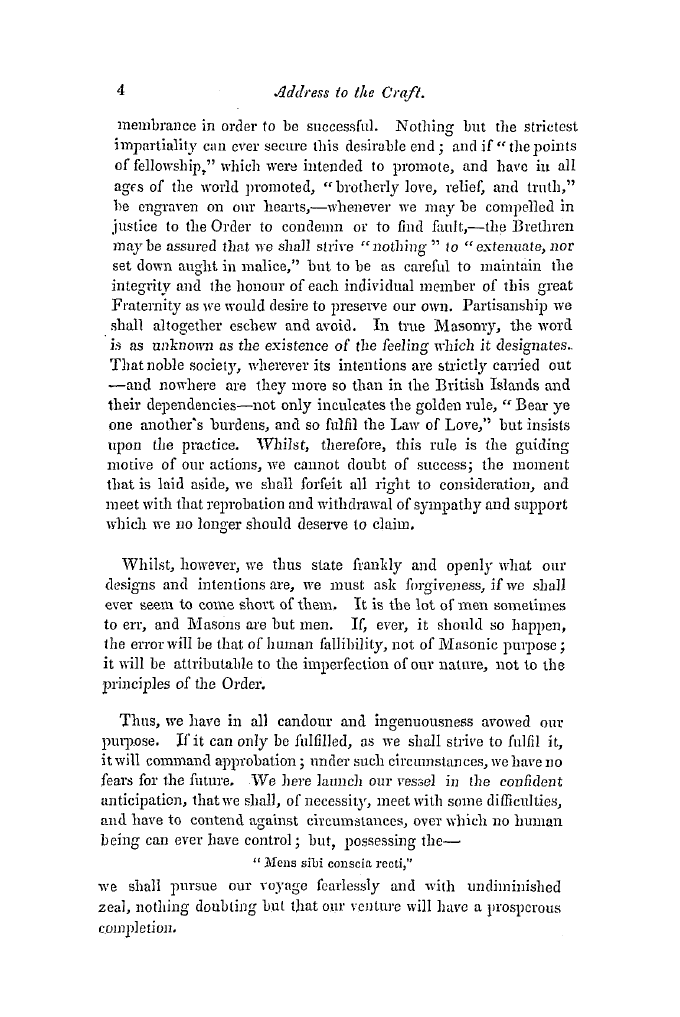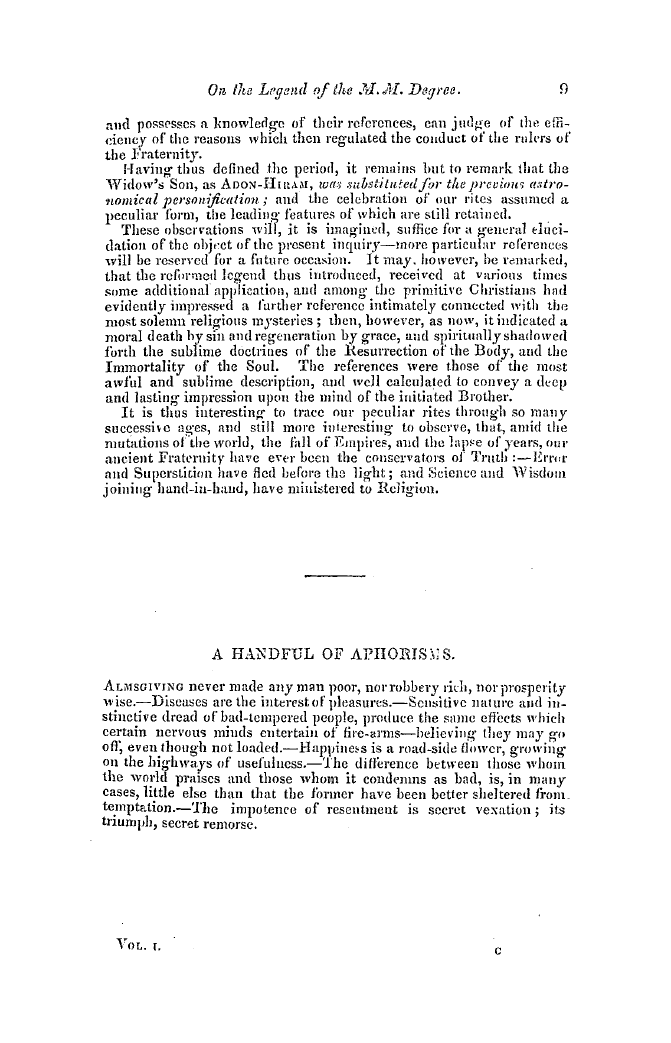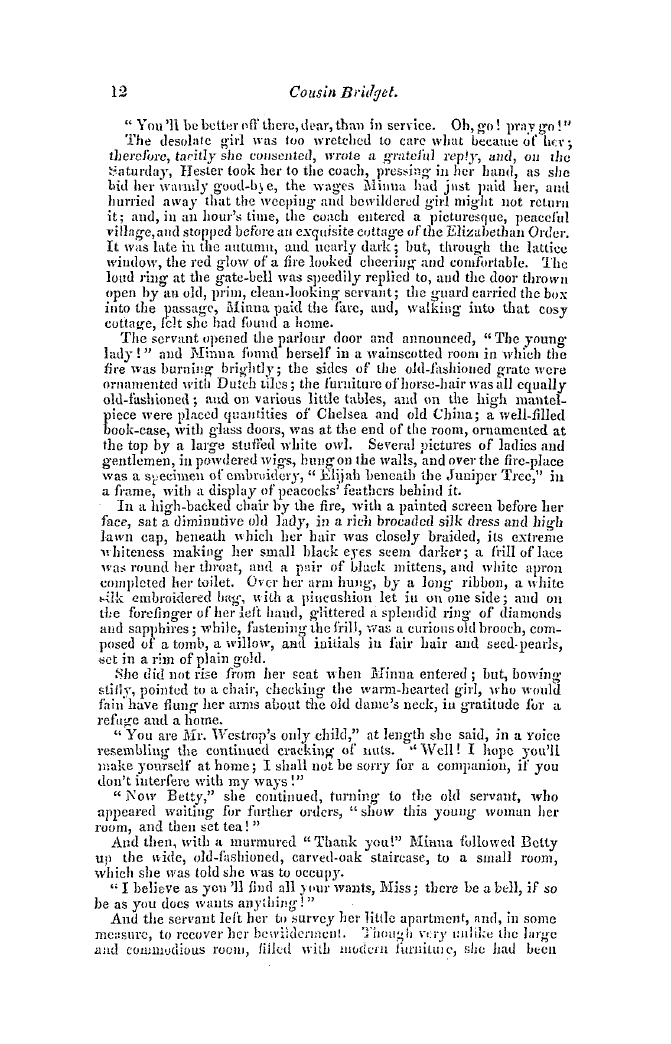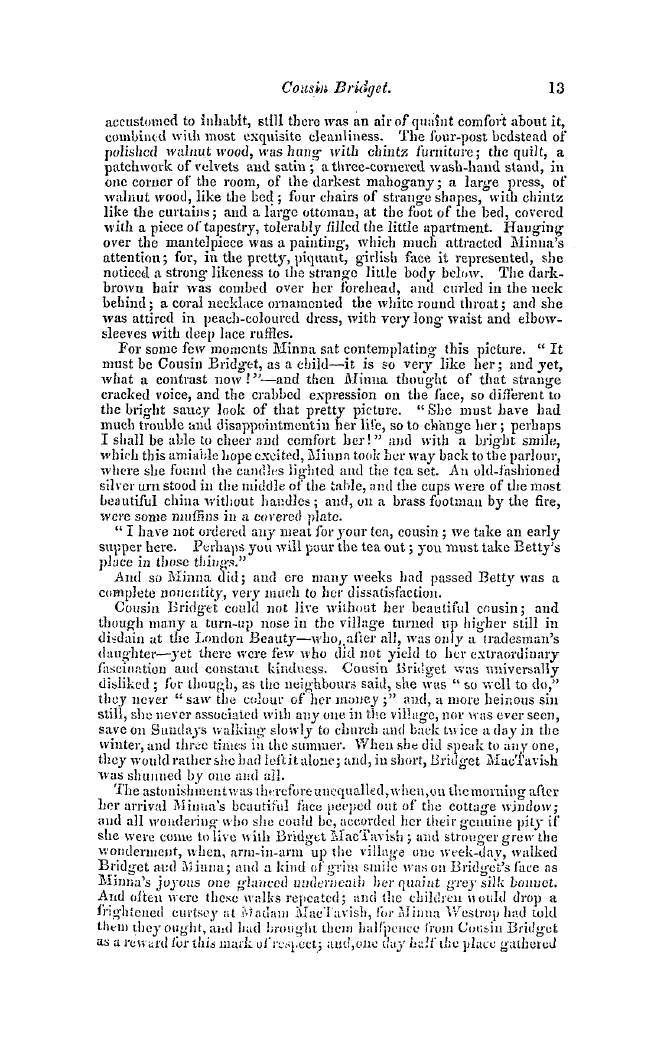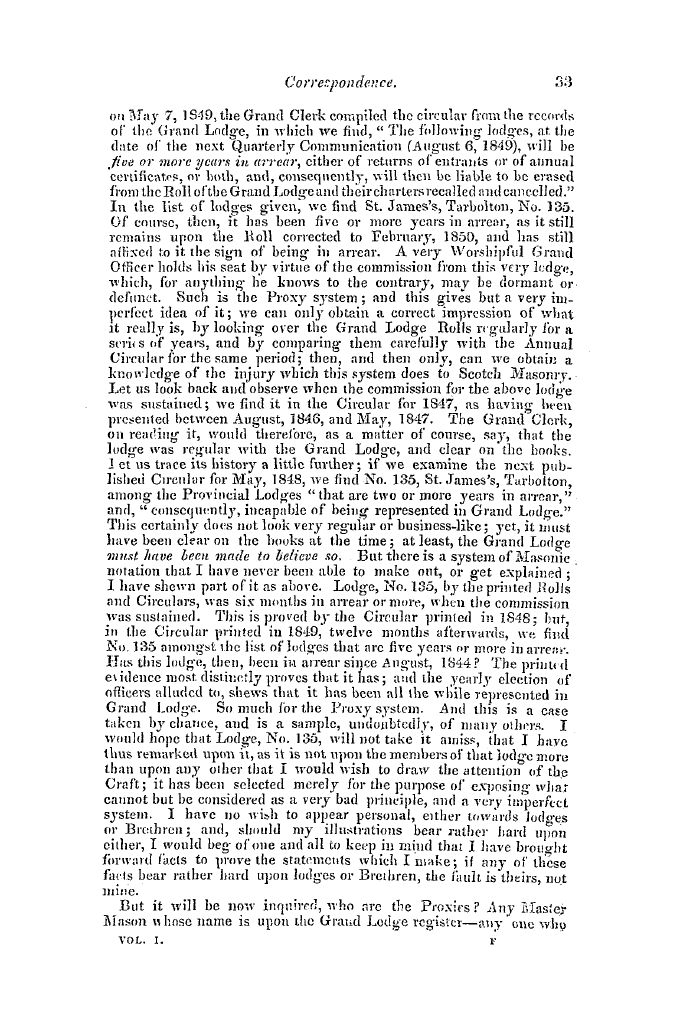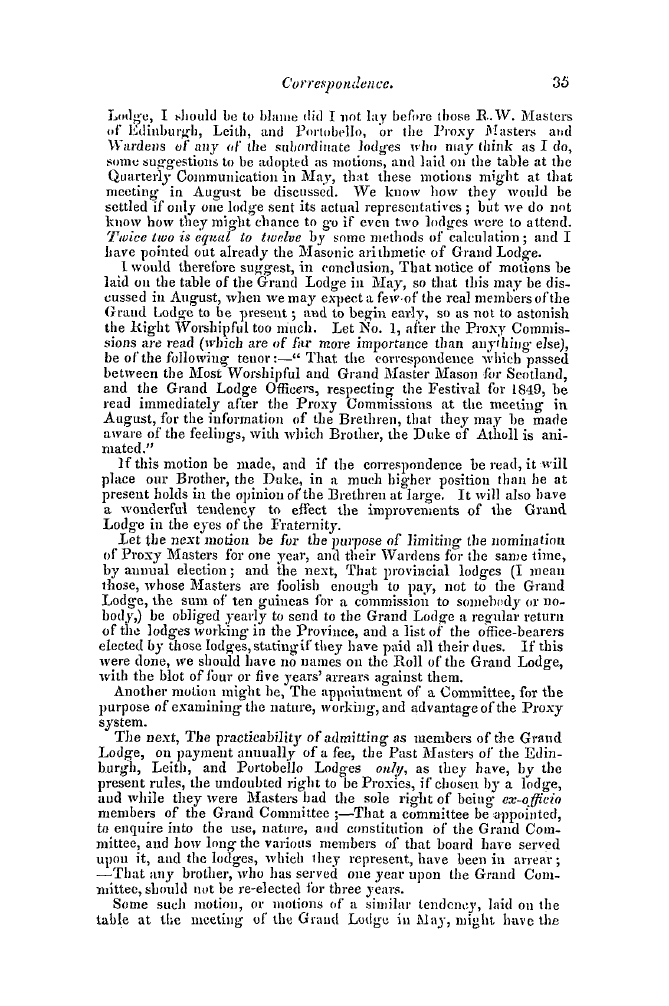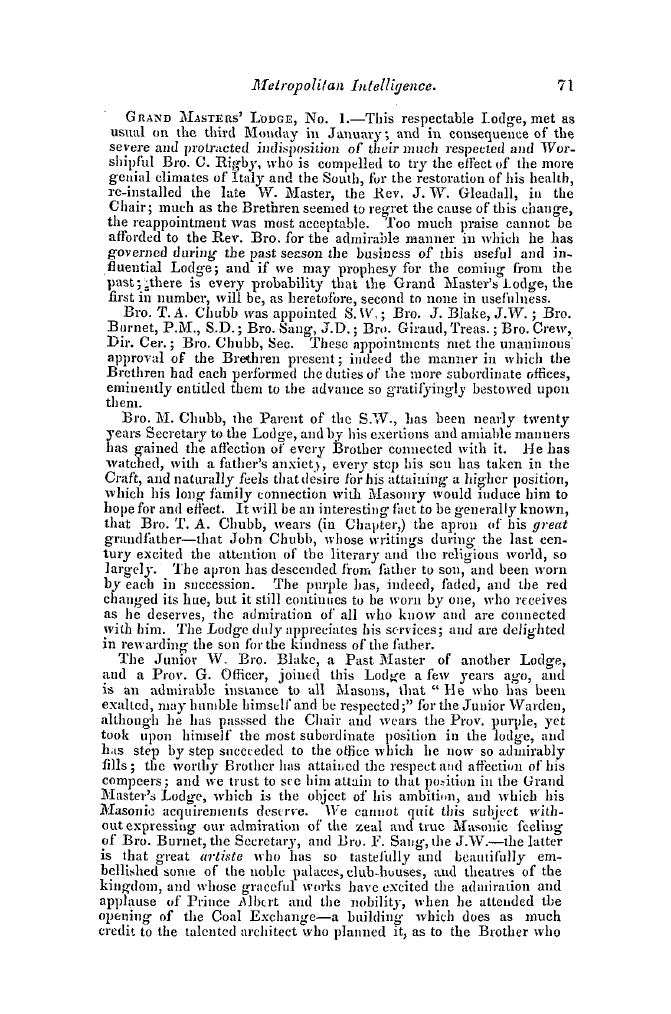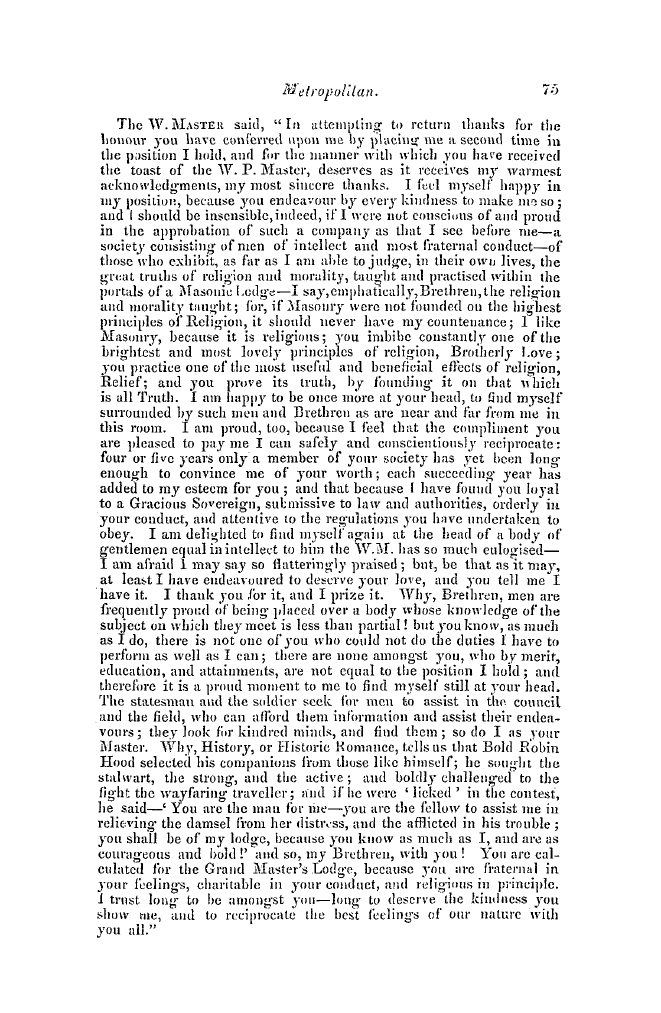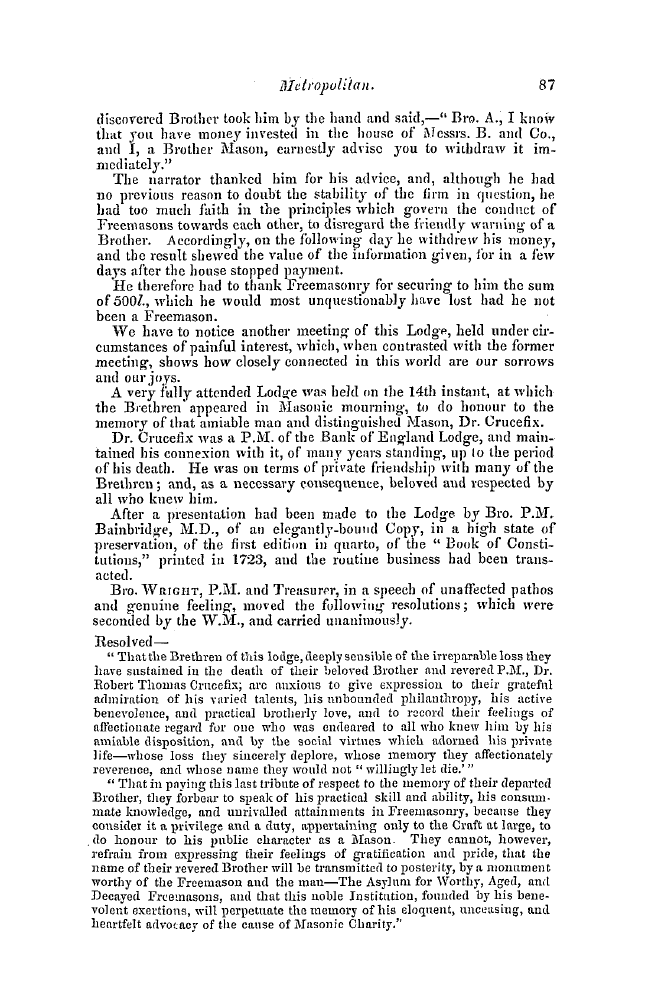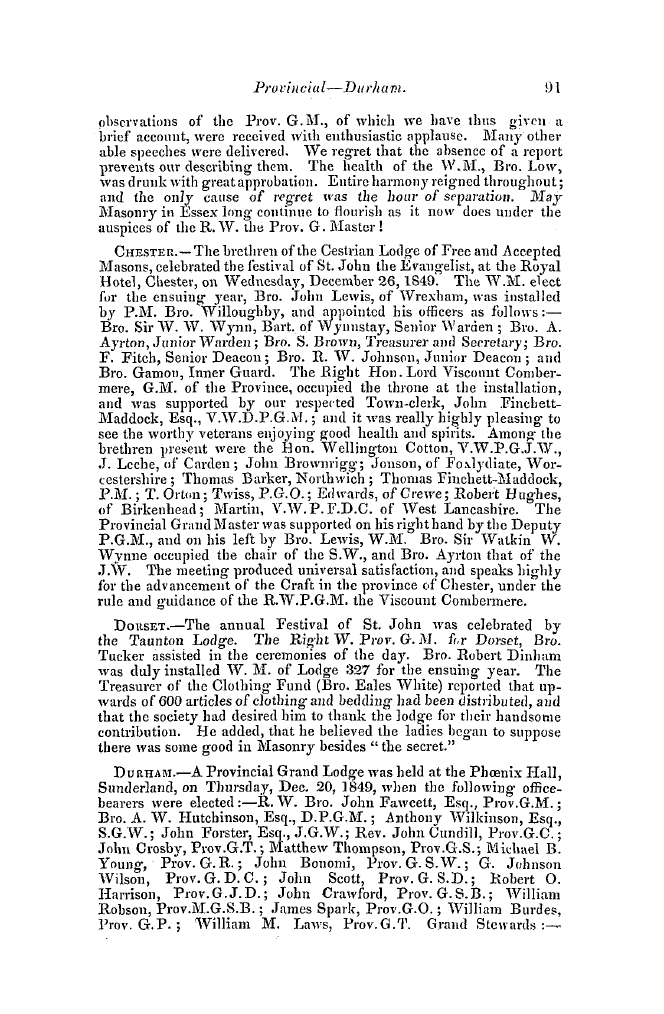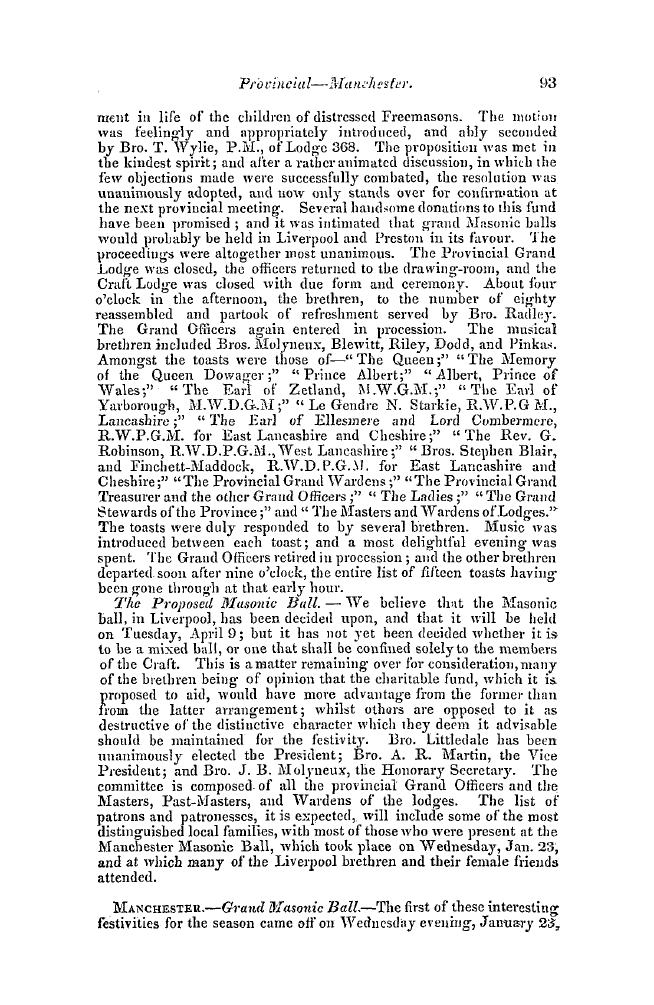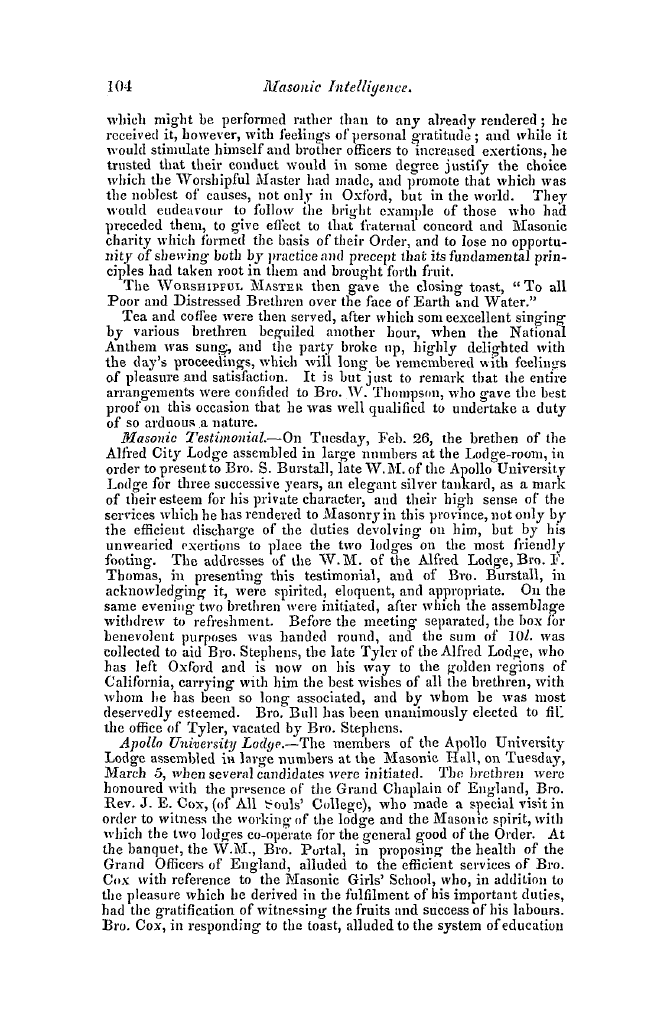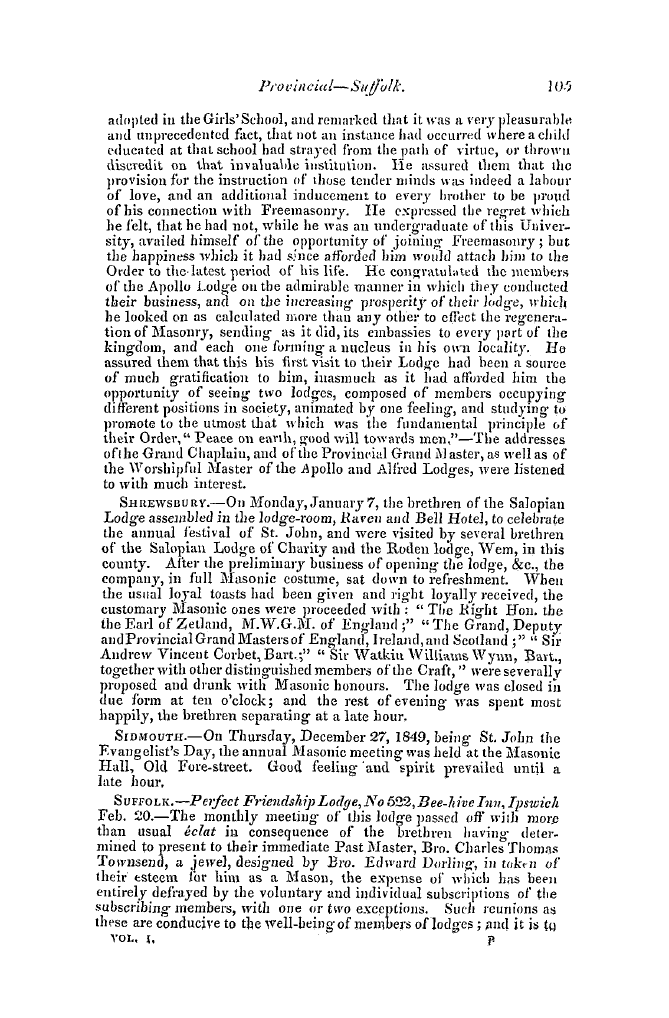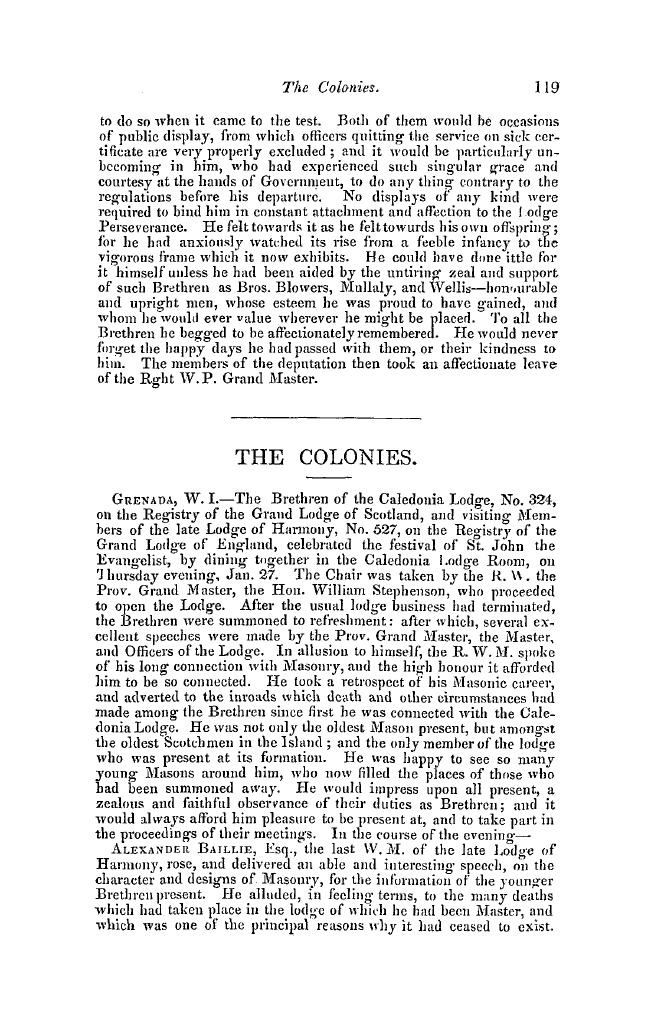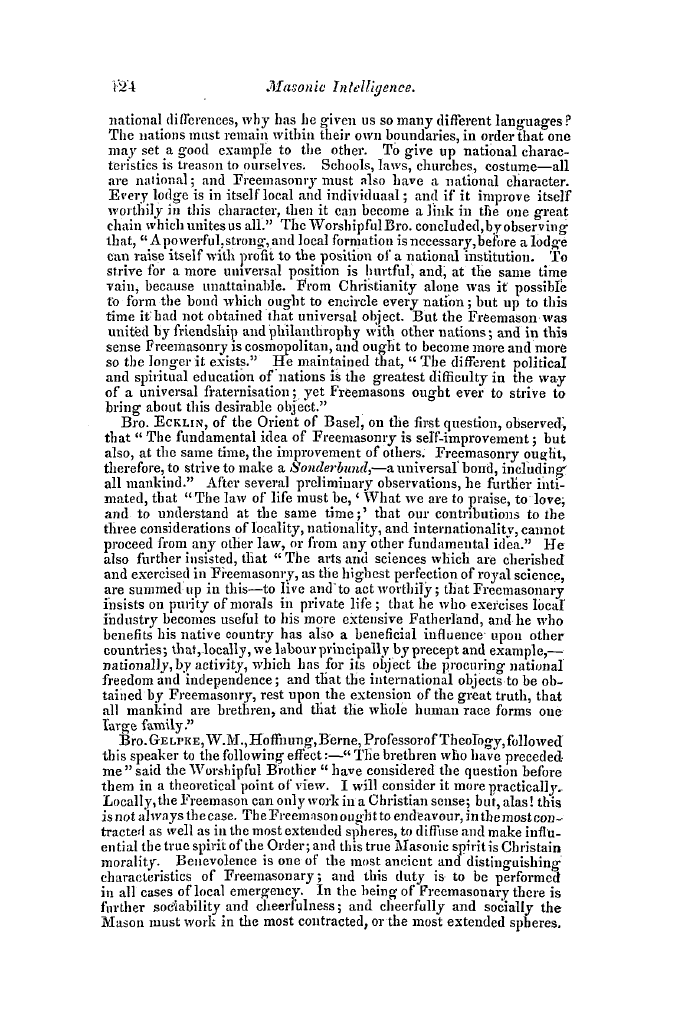-
Articles/Ads
Article GLASGOW MASONICS. ← Page 3 of 12 →
Note: This text has been automatically extracted via Optical Character Recognition (OCR) software.
Glasgow Masonics.
hut it will greatly increase their opportunities of testifying their ardent attachment to the princi ples of our Order , their sincere respect for tbe Grand Lodge , and enable them to lend their powerful and willing aid in upholding the interests of the Craft , at no time more needed in our province than at present . I have several times had an opportunity of examining an ancient relic belonging to tbe Freemen St . John ' s Lod consisting of an
ge , old oak charter , or jewel-chest , of which a description , from the pen , I believe , of the W . M . of St . Mark ' s , appeared some months ago in the most popular of our local journals , tlie Glasgoiv Herald . It is about eighteen and a-half inches long , thirteen and a-half wide , and twelve ' deep . The massive oak , of which it is composed , would amply suffice for the construction of three modern cabinets of like dimensions , which , together with the double locks , and ponderous iron bands with which
it is provided , indicate the precious character of the articles , of whicli it was , doubtless , tliedepositary . Tbe top , formed of solid oak , originally from three to four inches thick , is elaborately carved iu high and hold relief . In the centre is a clustered group of the implements of the Craft—the square , the compass , plumb-rule , and twenty-four-inchguage ; while the base of a column , emblematic of durability and strength , is enclosed between the legs of tbe compassand the stock and blade of
, the square . To the ri ght is a wreath of foliage , attached by the extremities to two projecting scrolls ; and to the left , the boldly relieved head , neck , and breast of a venerable cherub , with expanded wings . A similar figure , also cut out of the solid oak , adorns each end . The lid is bordered with something between the Norman or earl y English billetmoulding and the carved bead , so common in the enrichments of Grecian architectureand a leaf ou an ogee profile . The front is divided into
, two compartments hy the same carved beading , or miniature billet moulding , the undermost defining the front of a drawer , also secured by two ancient locks of cunning- workmanship . Within the > e compartments are inscribed , in projecting Roman letters , of somewhat irregular form and arrangement , so as to accommodate themselves to the
fastenings—GOD [ J 0 SAVE [ J o THE 16 KING 84 AND [ j 0 MASONS' [ j 0 CRATT —— -
The bottom , of considerable thickness , projects beyond the sides and ends , and finishing in a cyma reversa forms a solid base . It is altogether an antique and venerable looking object , redolent of Archseological associations , and , doubtless , intended for the safe lod » -ment of their Royal Charter and the mysterious insi gnia and jewels of the Craft . What rare and precious records of the ancient usages may have been secured under the quadruple locks of this iron bound ark " ; and what hieroglyphic symbols , of word , sign , and grip , incommunicable to ears or eyes profane , have lurked within its sacred crannies ! Although , for a year or two , the lodges generall y of this district
Note: This text has been automatically extracted via Optical Character Recognition (OCR) software.
Glasgow Masonics.
hut it will greatly increase their opportunities of testifying their ardent attachment to the princi ples of our Order , their sincere respect for tbe Grand Lodge , and enable them to lend their powerful and willing aid in upholding the interests of the Craft , at no time more needed in our province than at present . I have several times had an opportunity of examining an ancient relic belonging to tbe Freemen St . John ' s Lod consisting of an
ge , old oak charter , or jewel-chest , of which a description , from the pen , I believe , of the W . M . of St . Mark ' s , appeared some months ago in the most popular of our local journals , tlie Glasgoiv Herald . It is about eighteen and a-half inches long , thirteen and a-half wide , and twelve ' deep . The massive oak , of which it is composed , would amply suffice for the construction of three modern cabinets of like dimensions , which , together with the double locks , and ponderous iron bands with which
it is provided , indicate the precious character of the articles , of whicli it was , doubtless , tliedepositary . Tbe top , formed of solid oak , originally from three to four inches thick , is elaborately carved iu high and hold relief . In the centre is a clustered group of the implements of the Craft—the square , the compass , plumb-rule , and twenty-four-inchguage ; while the base of a column , emblematic of durability and strength , is enclosed between the legs of tbe compassand the stock and blade of
, the square . To the ri ght is a wreath of foliage , attached by the extremities to two projecting scrolls ; and to the left , the boldly relieved head , neck , and breast of a venerable cherub , with expanded wings . A similar figure , also cut out of the solid oak , adorns each end . The lid is bordered with something between the Norman or earl y English billetmoulding and the carved bead , so common in the enrichments of Grecian architectureand a leaf ou an ogee profile . The front is divided into
, two compartments hy the same carved beading , or miniature billet moulding , the undermost defining the front of a drawer , also secured by two ancient locks of cunning- workmanship . Within the > e compartments are inscribed , in projecting Roman letters , of somewhat irregular form and arrangement , so as to accommodate themselves to the
fastenings—GOD [ J 0 SAVE [ J o THE 16 KING 84 AND [ j 0 MASONS' [ j 0 CRATT —— -
The bottom , of considerable thickness , projects beyond the sides and ends , and finishing in a cyma reversa forms a solid base . It is altogether an antique and venerable looking object , redolent of Archseological associations , and , doubtless , intended for the safe lod » -ment of their Royal Charter and the mysterious insi gnia and jewels of the Craft . What rare and precious records of the ancient usages may have been secured under the quadruple locks of this iron bound ark " ; and what hieroglyphic symbols , of word , sign , and grip , incommunicable to ears or eyes profane , have lurked within its sacred crannies ! Although , for a year or two , the lodges generall y of this district
